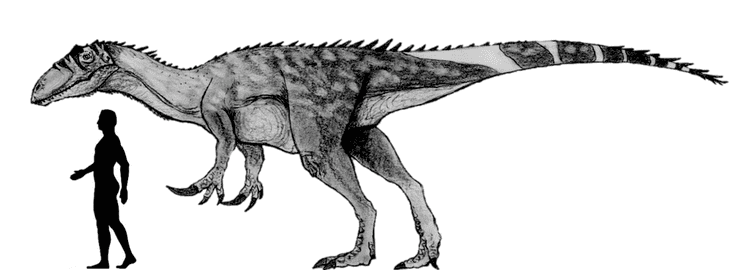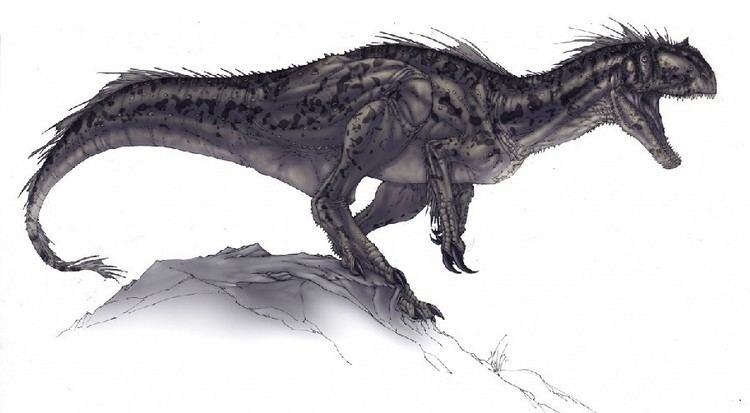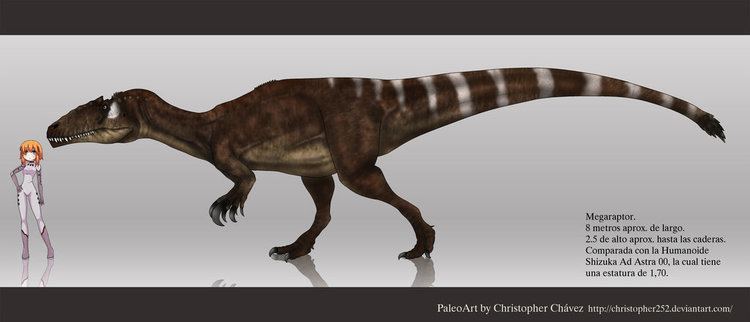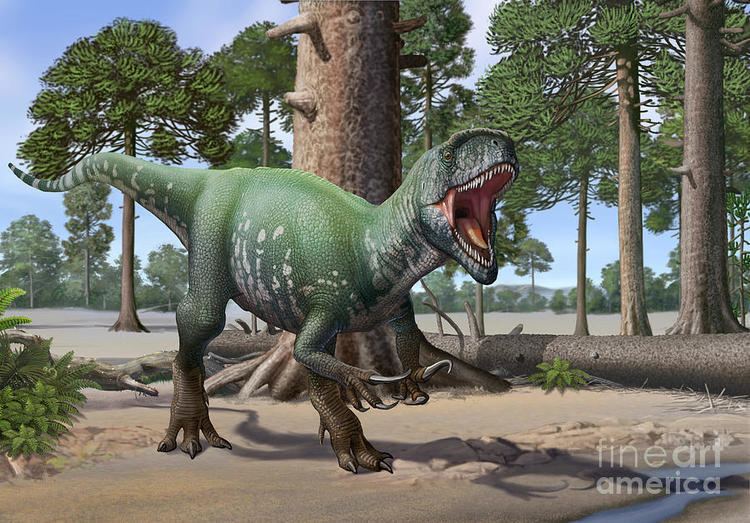Scientific name Megaraptor Rank Genus | Phylum Chordata Clade †Megaraptora | |
 | ||
Similar Dinosaur, Utahraptor, Theropods, Suchomimus, Deinonychus | ||
I m a dinosaur megaraptor hooplakidz tv
Megaraptor ("giant thief") is a genus of large theropod dinosaur that lived in the Turonian to Coniacian ages of the Late Cretaceous. Its fossils have been discovered in the Patagonian region of Argentina. Initially thought to have been a giant dromaeosaur-like coelurosaur, it was classified as a neovenatorid allosauroid in previous phylogenies, but a more recent phylogeny has placed it as a basal tyrannosauroid coelurosaur. The discovery and phylogeny of Gualicho suggests that Megaraptor is either an allosauroid or basal coelurosaur.
Contents

Description

Megaraptor was initially described as a giant dromaeosaur, known primarily from a single claw (about 30 cm long) that resembled the sickle-shaped foot claw of dromaeosaurids. The discovery of a complete front limb, however, showed that this giant claw actually came from the first finger of the hand. In 2010, Gregory S. Paul estimated its length at eight metres (26 ft), its weight at one tonne (2,200 lbs). The hands were unusually elongated, bearing sickle-shaped claws even more recurved than those of spinosaurids.
Classification

The hand is quite distinct from other basal tetanurans, so it was not initially clear whether Megaraptor was an allosaurid, a carcharodontosaurid, a spinosauroid, or something else entirely. Subsequent studies, as well as the identification of close relatives with similar large claws on the forelimbs (see below), helped identify Megaraptor as a highly advanced and lightly built allosauroid, and a member of the family Neovenatoridae. More recent studies have proposed that Megaraptor and its kin are actually tyrannosauroids or spinosauroids as opposed to allosauroids. A juvenile specimen described in 2014 has provided more evidence towards Megaraptor being a primitive tyrannosauroid. The discovery of Gualicho indicates that Megaraptor may not be a tyrannosauroid, but either an allosauroid or basal coelurosaur.

When first discovered and prior to publication, the spinosaurid Baryonyx was also reported to be a dromaeosaurid, and the allosauroid Chilantaisaurus was reported to be a possible spinosaurid, both based on the large hand claws.
The cladogram shown below follows an analysis by Porfiri et al., 2014.
Australian relatives

A close relative of Megaraptor, Australovenator, was discovered in Australia during 2009, helping to solve the mystery of its identity. An additional dinosaur believed to be related to Megaraptor was found in southeastern Australia, Dinosaur Cove. The creature is believed to be around half the size of Megaraptor. It has not yet been named. These finds may show that the breakup of Gondwana was later than once thought.[2]
